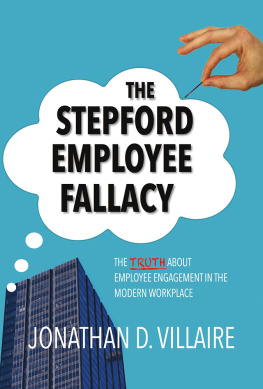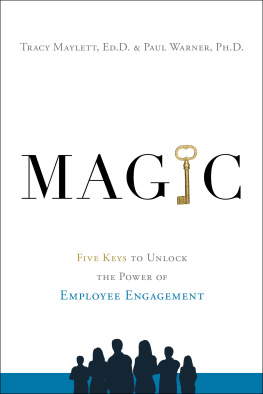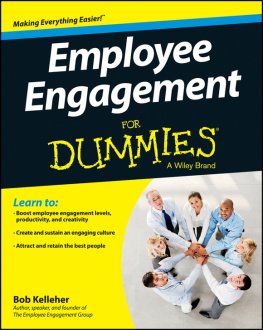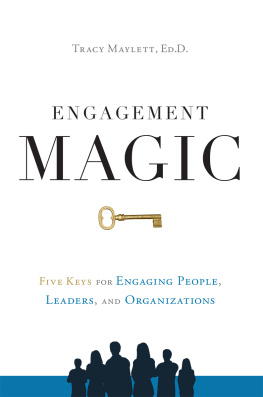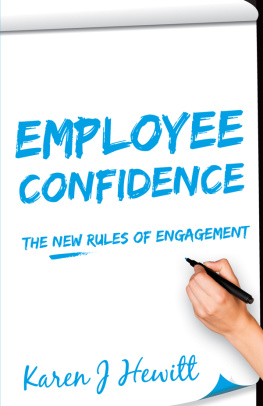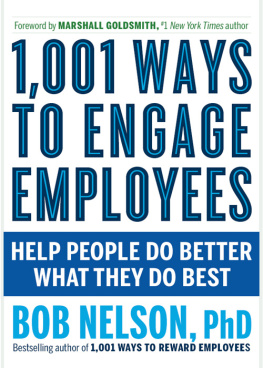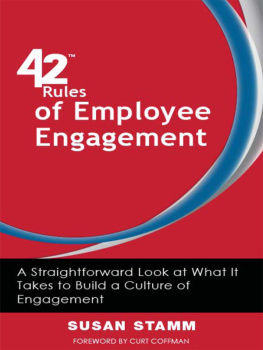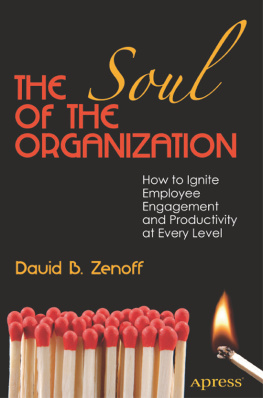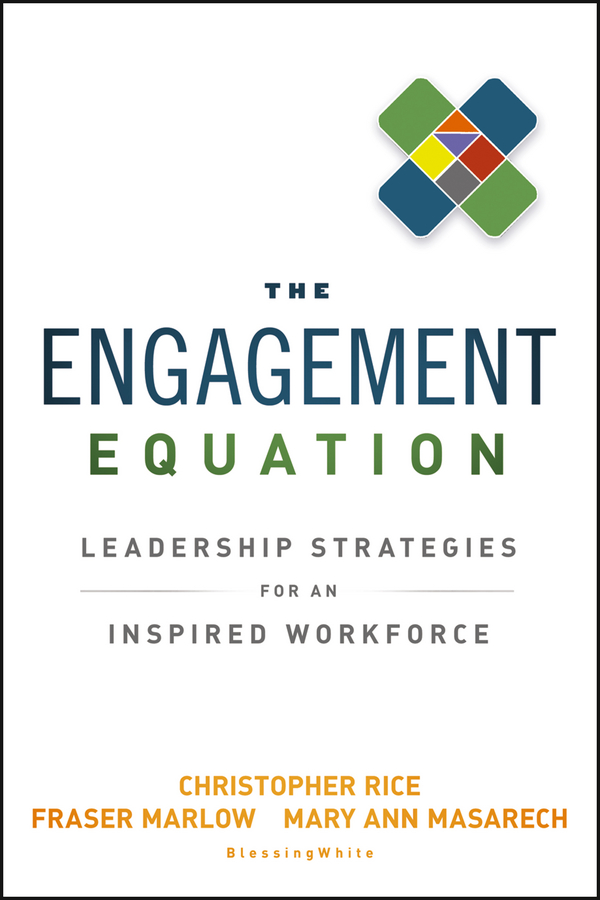Contents

Cover image and design: Paul McCarthy
Copyright 2012 by BlessingWhite. All rights reserved.
Published by John Wiley & Sons, Inc., Hoboken, New Jersey.
Published simultaneously in Canada.
No part of this publication may be reproduced, stored in a retrieval system, or transmitted in any form or by any means, electronic, mechanical, photocopying, recording, scanning, or otherwise, except as permitted under Section 107 or 108 of the 1976 United States Copyright Act, without either the prior written permission of the Publisher, or authorization through payment of the appropriate per-copy fee to the Copyright Clearance Center, Inc., 222 Rosewood Drive, Danvers, MA 01923, (978) 750-8400, fax (978) 646-8600, or on the web at www.copyright.com . Requests to the Publisher for permission should be addressed to the Permissions Department, John Wiley & Sons, Inc., 111 River Street, Hoboken, NJ 07030, (201) 748-6011, fax (201) 748-6008, or online at http://www.wiley.com/go/permissions .
Limit of Liability/Disclaimer of Warranty: While the publisher and author have used their best efforts in preparing this book, they make no representations or warranties with respect to the accuracy or completeness of the contents of this book and specifically disclaim any implied warranties of merchantability or fitness for a particular purpose. No warranty may be created or extended by sales representatives or written sales materials. The advice and strategies contained herein may not be suitable for your situation. You should consult with a professional where appropriate. Neither the publisher nor author shall be liable for any loss of profit or any other commercial damages, including but not limited to special, incidental, consequential, or other damages.
For general information on our other products and services or for technical support, please contact our Customer Care Department within the United States at (800) 762-2974, outside the United States at (317) 572-3993 or fax (317) 572-4002.
Wiley publishes in a variety of print and electronic formats and by print-on-demand. Some material included with standard print versions of this book may not be included in e-books or in print-on-demand. If this book refers to media such as a CD or DVD that is not included in the version you purchased, you may download this material at http://booksupport.wiley.com . For more information about Wiley products, visit www.wiley.com .
ISBN 978-1-118-30835-6 (cloth); ISBN 978-1-118-33199-6 (ebk);
ISBN 978-1-118-33419-5 (ebk); ISBN 978-1-118-33532-1 (ebk)
Preface: Standing on the Shoulders of GiantsThe Legacy of Buck Blessing and Tod White
We often hear people describing employee engagement as a new field in corporate leadership. We beg to differ. Employee engagementlike innovation or effective managementhas always been around. But it is an idea that leaders are turning to with more pressing attention as they explore all options for developing a competitive advantage. Increasing engagement is one of the few ways to boost productivity without additional headcount or new technology. While competitors can access capital, resources, and markets in the same way that you can, organizational culture and the engagement of a workforce are things that cannot be acquired or outsourced.
Two men who understood this were Buck Blessing and Tod White. In 1973 they founded their fledgling partnership above a barber shop in Princeton, New Jersey. Together, they devised a model of employee engagement and spent the next five years perfecting it by training thousands of professionals. To date, millions of people worldwide have benefited from programs that use this approach.
Sociology, psychology, and neuroscience are among the many disciplines that have taken a stab at the topic of employee engagement, and all have contributed to the body of research. We have found that many of these suggested approaches are great in theory but fall apart when faced with the realities of implementing them in the workplace.
Our approach remains firmly as practitioners: we help organizations move the needle on employee engagement every day. The pragmatic lessons we have learned from advising senior teams and working hands-on in developing professionals around the world are distilled into this book.
Today BlessingWhite is a thriving consultancy and organizational development firm focused exclusively on employee engagement and leadership development. Companies such as General Electric, Toyota, Rolls-Royce, Unilever, Deutsche Bank, and Johnson & Johnson have turned to BlessingWhite to help craft their culture, develop their leaders, and engage their teams. In this book, we share the best practices and insights from these companies and many other organizations from around the world.
This journey began with Buck and Tod. We thank them for the initial spark and for starting us down the road. We dedicate this book to them.
Acknowledgments
This book was the work of many BlessingWhite colleagues around the world, past and present.
We want to specially acknowledge the contributions of David Koeppel, whose articles for the New York Times impressed us and made us realize we needed his guidance.
We are indebted to several of our partners in Asia PacificKen Simper, Reg Polson, Rebecca Jones, Roy Gao, Ashish Arora, and Paul Mitchellwho arranged interviews with executives at companies in China, India, and Australia.
Our partners at Abu Dhabi University provided insight and arranged for us to talk to executives in the Middle East. We want to express our appreciation to Ahmad Badr, Gene Crozier, and Rabei Wazzeh.
We thank Paul Turner, Professor of Management Practice at Birmingham City University and longtime thought partner, for providing insightful guidance that kept us on track.
BlessingWhite employees in the United States and Europe contributed insight, challenged us, found interesting people for us to interview, did research and analysis, and made the book far better. Our thanks to Amanda Veinott, Matt Varava, Joan Dasher, Scott Mason, Chris Brunone, Eileen Garger, Charmian Hall, Tom Barry, Bill Lingrel, Mike Shoenfelt, and Sue Kang, who got thrown in the deep end.
And finally, we wish to thank our editor at John Wiley & Sons, Adrianna Johnson, who guided us through the process.
Christopher Rice,
Fraser Marlow, and
Mary Ann Masarech
Introduction
We Accept the Premise
There is an organization in your industry that enjoys the benefits of high employee engagement. You can read it in its performance metrics and feel it when you walk the corridors. You see it in the loyalty displayed by its customers, in its ongoing innovation, and in the piles of applications received for each job opening. This organization has achieved high levels of employee commitment and is buzzing with activity and a sense of purpose.
Is this your organization?
Maybe you are a leader in an organization suffering from chronic disengagement and are observing your more engaged competitors with envy. How can we replicate what they have? How come they seem to have it and we dont?
High levels of employee engagement drive high organizational performance. As a leader you get this.
As you peel back the layers and examine the functions of that more engaged enterprise, it is difficult initially to put your finger on what exactly is different. Similar staff, similar expertise, similar products, and a similar customer base. But either the soul is there... or it isnt. How do you emulate or replicate those intangibles? And how do you protect and nourish it once you have it?



